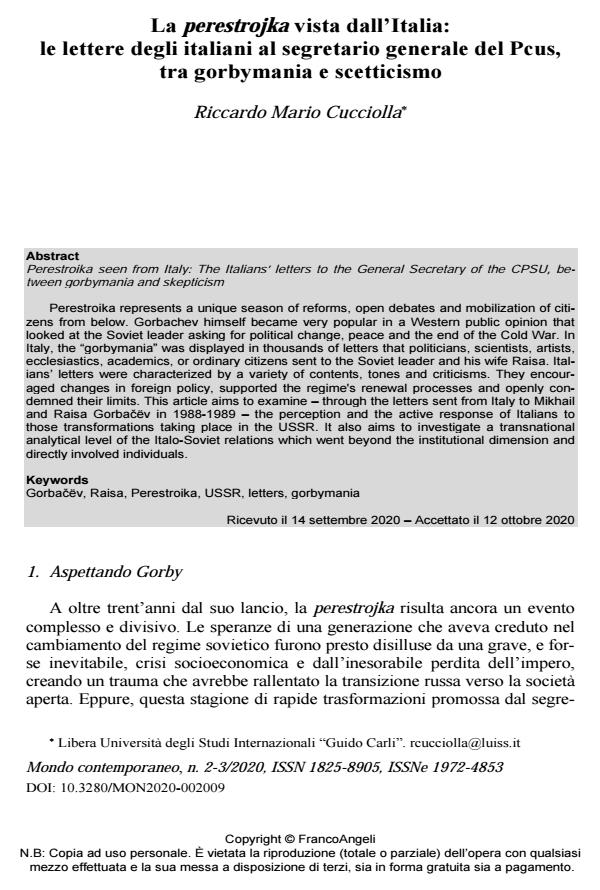Perestroika seen from Italy: The Italians’ letters to the General Secretary of the CPSU, be-tween gorbymania and skepticism
Journal title MONDO CONTEMPORANEO
Author/s Riccardo Mario Cucciolla
Publishing Year 2021 Issue 2020/2-3
Language Italian Pages 20 P. 171-190 File size 317 KB
DOI 10.3280/MON2020-002009
DOI is like a bar code for intellectual property: to have more infomation
click here
Below, you can see the article first page
If you want to buy this article in PDF format, you can do it, following the instructions to buy download credits

FrancoAngeli is member of Publishers International Linking Association, Inc (PILA), a not-for-profit association which run the CrossRef service enabling links to and from online scholarly content.
Perestroika represents a unique season of reforms, open debates and mobilization of citizens from below. Gorbachev himself became very popular in a Western public opinion that looked at the Soviet leader asking for political change, peace and the end of the Cold War. In Italy, the "gorbymania" was displayed in thousands of letters that politicians, scientists, artists, ecclesiastics, academics, or ordinary citizens sent to the Soviet leader and his wife Raisa. Italians’ letters were characterized by a variety of con-tents, tones and criticisms. They encouraged changes in foreign policy, supported the regime's renewal processes and openly condemned their limits. This article aims to examine ‒ through the letters sent from Italy to Mikhail and Raisa Gorbačëv in 1988-1989 ‒ the perception and the active response of Italians to those transformations tak-ing place in the USSR. It also aims to investigate a transnational analytical level of the Italo-Soviet relations which went beyond the institutional dimension and directly in-volved individuals.
Keywords: Gorbačëv, Raisa, Perestroika, USSR, letters, gorbymania
Riccardo Mario Cucciolla, La perestrojka vista dall’Italia: le lettere degli italiani al segretario generale del Pcus, tra gorbymania e scetticismo in "MONDO CONTEMPORANEO" 2-3/2020, pp 171-190, DOI: 10.3280/MON2020-002009